Another science post. Michelle Starr (SPACE) reports:
Well, the verdict is in. The Moon is not made of green cheese after all.
A thorough investigation published back in May has found that the inner core of the Moon is, in fact, a solid ball with a density similar to that of iron. This, researchers hope, will help settle a long debate about whether the Moon's inner heart is solid or molten, and lead to a more accurate understanding of the Moon's history – and, by extension, that of the Solar System.
That's the same Moon that some are expecting us to live on in 2040.
So that's 17 years from now planning. Right now? NASA notes:
On NASA’s upcoming Artemis II mission, four astronauts will fly inside the Orion spacecraft and venture around the Moon, becoming the first to lay their eyes on our celestial neighbor at a relatively close distance in more than 50 years.
Orion will be home for NASA astronauts Reid Wiseman, Victor Glover, and Christina Koch, and Canadian Space Agency (CSA) astronaut Jeremy Hansen during their 600,000-mile, nearly 10-day journey. They will live and work in Orion’s crew module while its service module provides the essential commodities astronauts need to stay alive, including potable water and nitrogen and oxygen to breathe.
As the first time astronauts will fly aboard Orion, Artemis II will include several objectives to check out many of the spacecraft’s life support systems operating in space for the first time. The crew will provide valuable feedback for future Artemis missions to the Moon.
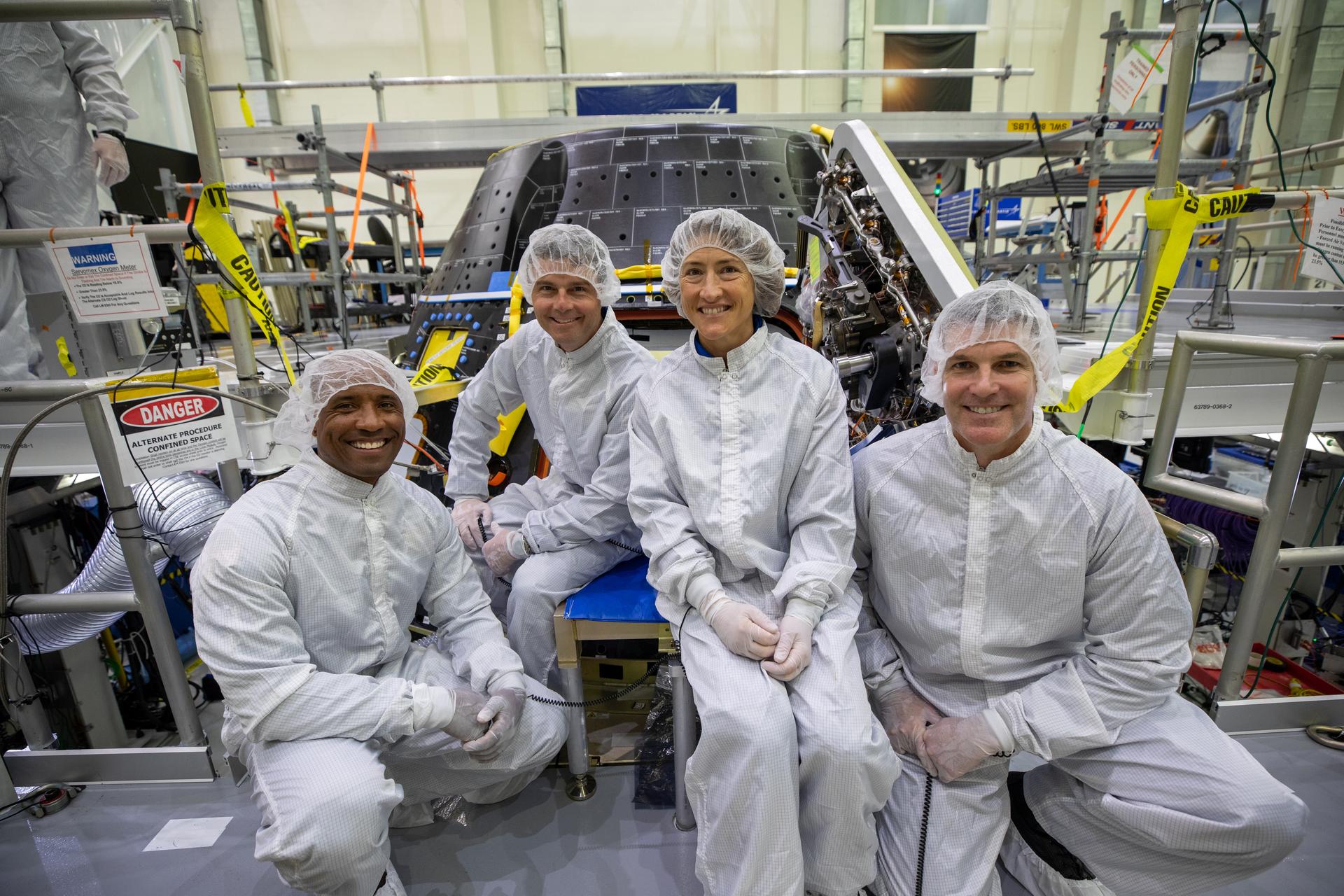
Spacecraft Life
Orion’s cabin has a habitable volume of 330 cubic feet, giving the crew about as much living space as two minivans. After their ride to space atop NASA’s SLS (Space Launch System) rocket, the crew will stow Koch and Hansen’s seats until the day of return, giving them more room to move around during the flight. The backs of Wiseman and Glover’s seats, as commander and pilot respectively, will remain out but their foot pans will be stowed. Orion has nearly 60 percent more space than the Apollo command module’s 210 cubic feet.
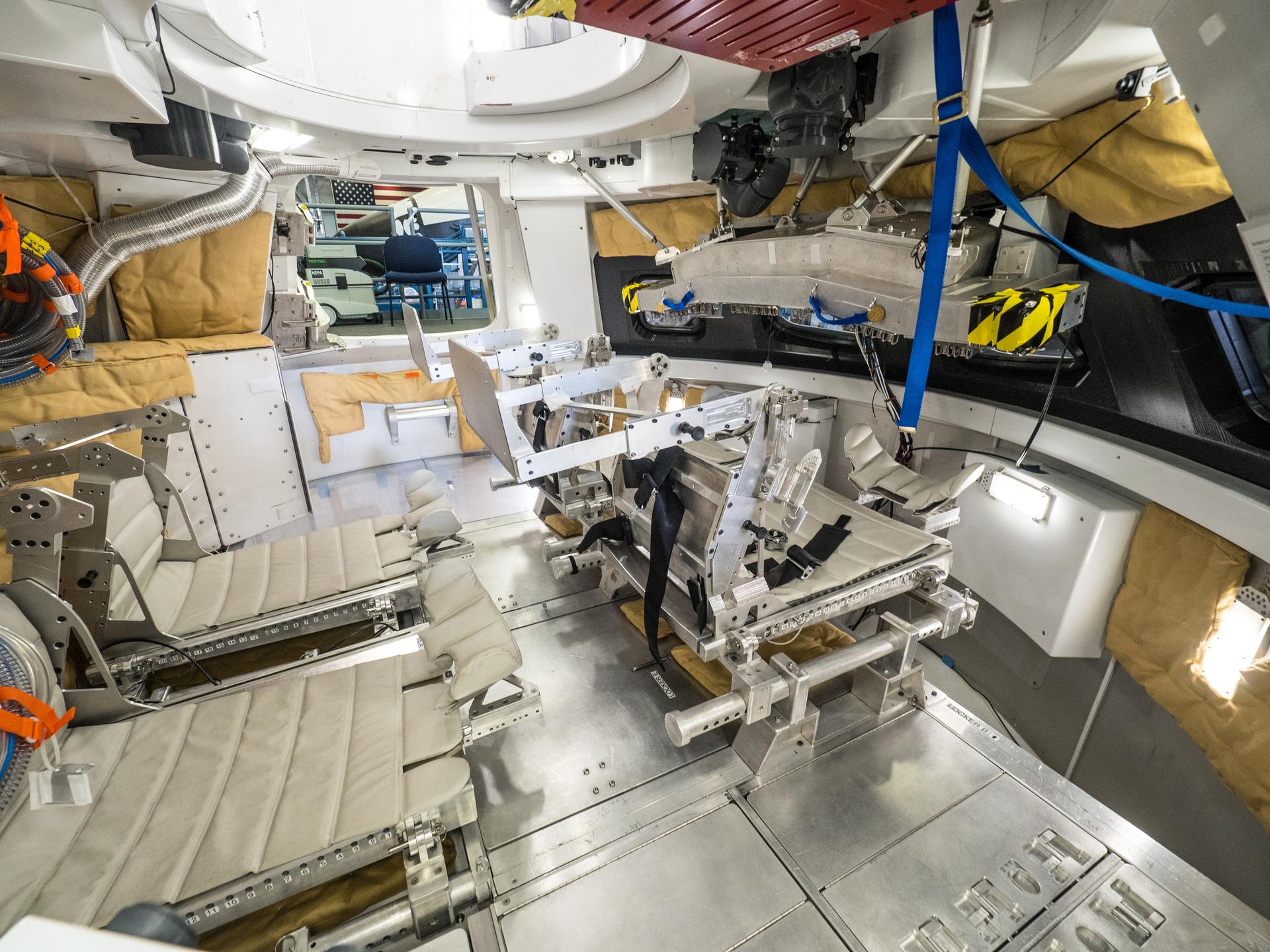
What’s on the Menu?
Food scientists in the Space Food Systems Laboratory at the agency’s Johnson Space Center in Houston are working with the crew to pre-select their meals long before departing Earth. While they won’t have the day-to-day options that a space station crew has during their expeditions, the Artemis II astronauts will have a set menu based on their personal preferences and nutritional needs. Orion is outfitted with a water dispenser and food warmer to rehydrate and heat food, and the crew will have dedicated meal times in their schedule to refuel.
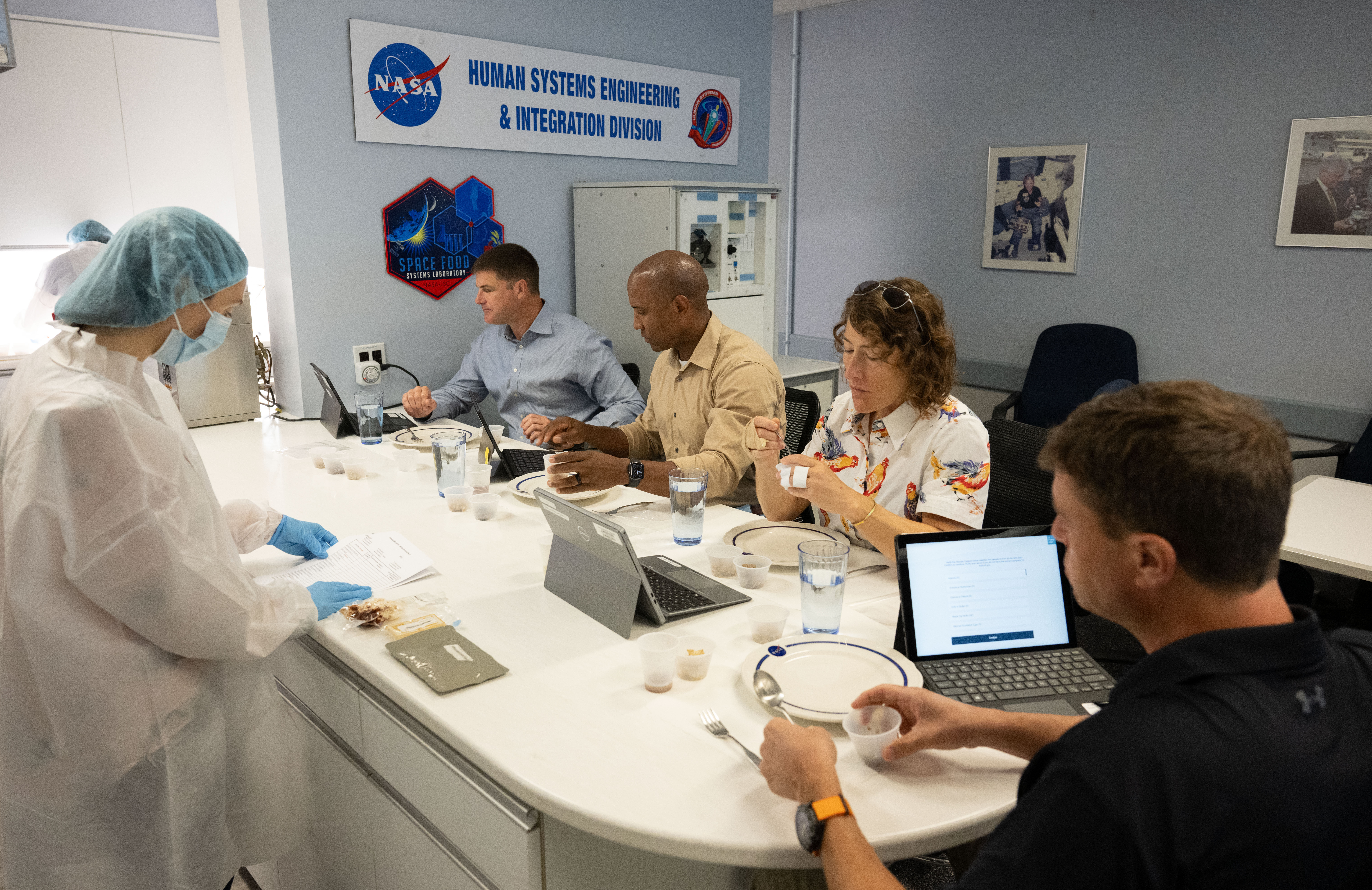
Fit for Flight
Each astronaut will dedicate 30 minutes daily to exercise, minimizing the muscle and bone loss that occurs without gravity. Orion is equipped with a flywheel, a small device installed directly below the side hatch used to enter and exit Orion and will conveniently be used as a step when the crew get inside Orion on launch day. The flywheel is a simple cable-based device for aerobic exercises like rowing and resistance workouts like squats and deadlifts. It works like a yo-yo, giving astronauts as much load as they put into it, maxing out at 400 pounds.
On the International Space Station, astronauts have several exercise machines that collectively weigh more than 4,000 pounds and occupy about 850 cubic feet. While effective for space station crew members, Orion’s exercise equipment must accommodate more stringent mass and volume constraints. The flywheel weighs approximately 30 pounds and is slightly smaller than a carry-on suitcase.
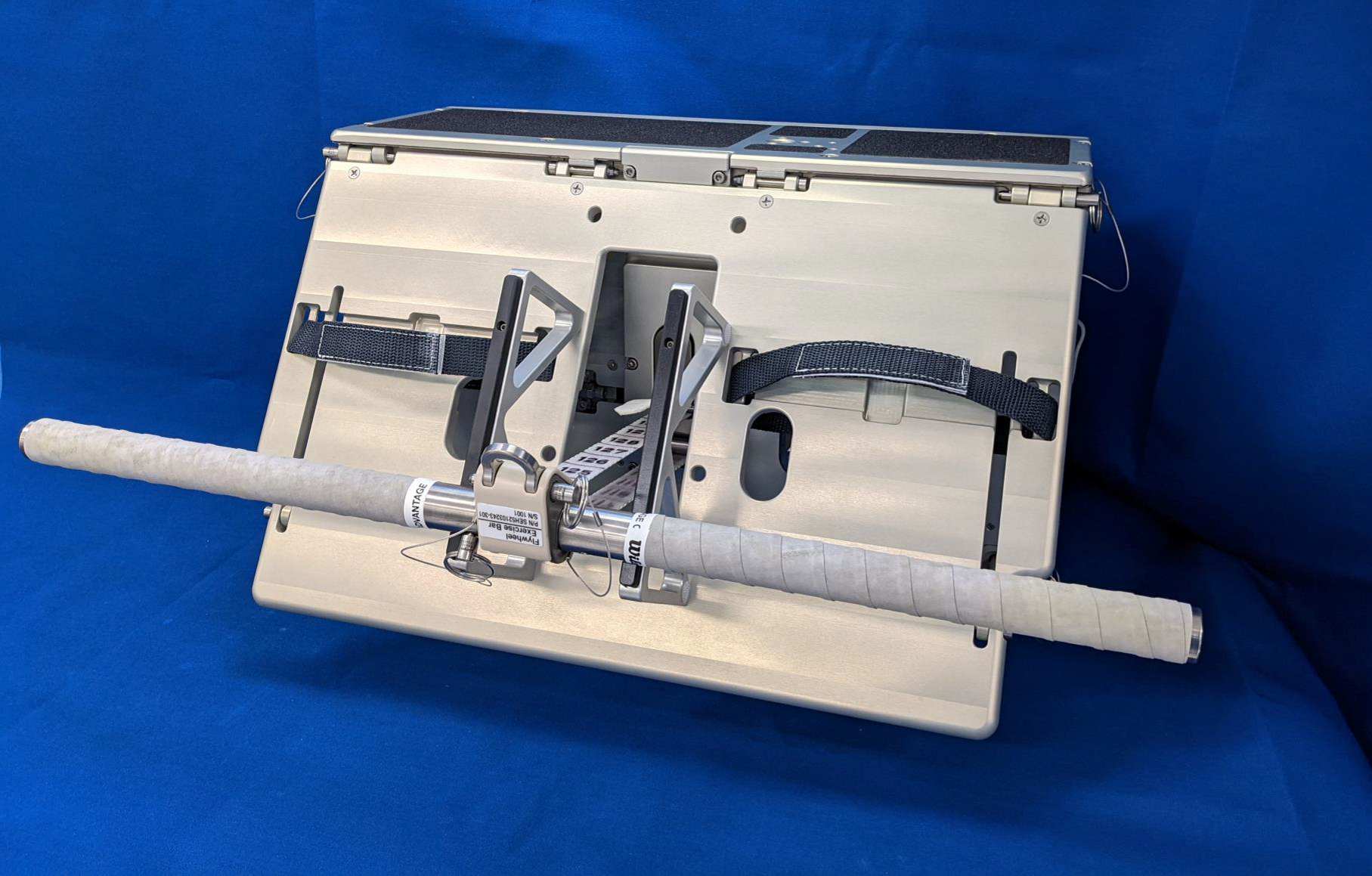
Keeping it Clean
The hygiene bay includes doors for privacy, a toilet, and space for the crew to bring in their personal hygiene kits. The kits typically include items like a hairbrush, toothbrush and toothpaste, soap, and shaving supplies. Astronauts can’t shower in space but use liquid soap, water, and rinseless shampoo to remain clean.
When nature inevitably comes calling, crew members will use Orion’s toilet, the Universal Waste Management System, a feature Apollo crews did not have. Nearly identical to a version flying on NASA’s space station, the system collects urine and feces separately. Urine will be vented overboard while feces are collected in a can and safely stowed for disposal upon return.
Should the toilet malfunction, the crew will be able to use collapsible contingency urinals, a system that collects urine in a bag and interfaces with the venting system to send the urine overboard. With two different styles designed to accommodate both females and males, the bags hold about a liter of urine each. Should the UWMS fail, the crew will still use the toilet for fecal collection, only without the fan that helps with fecal separation.
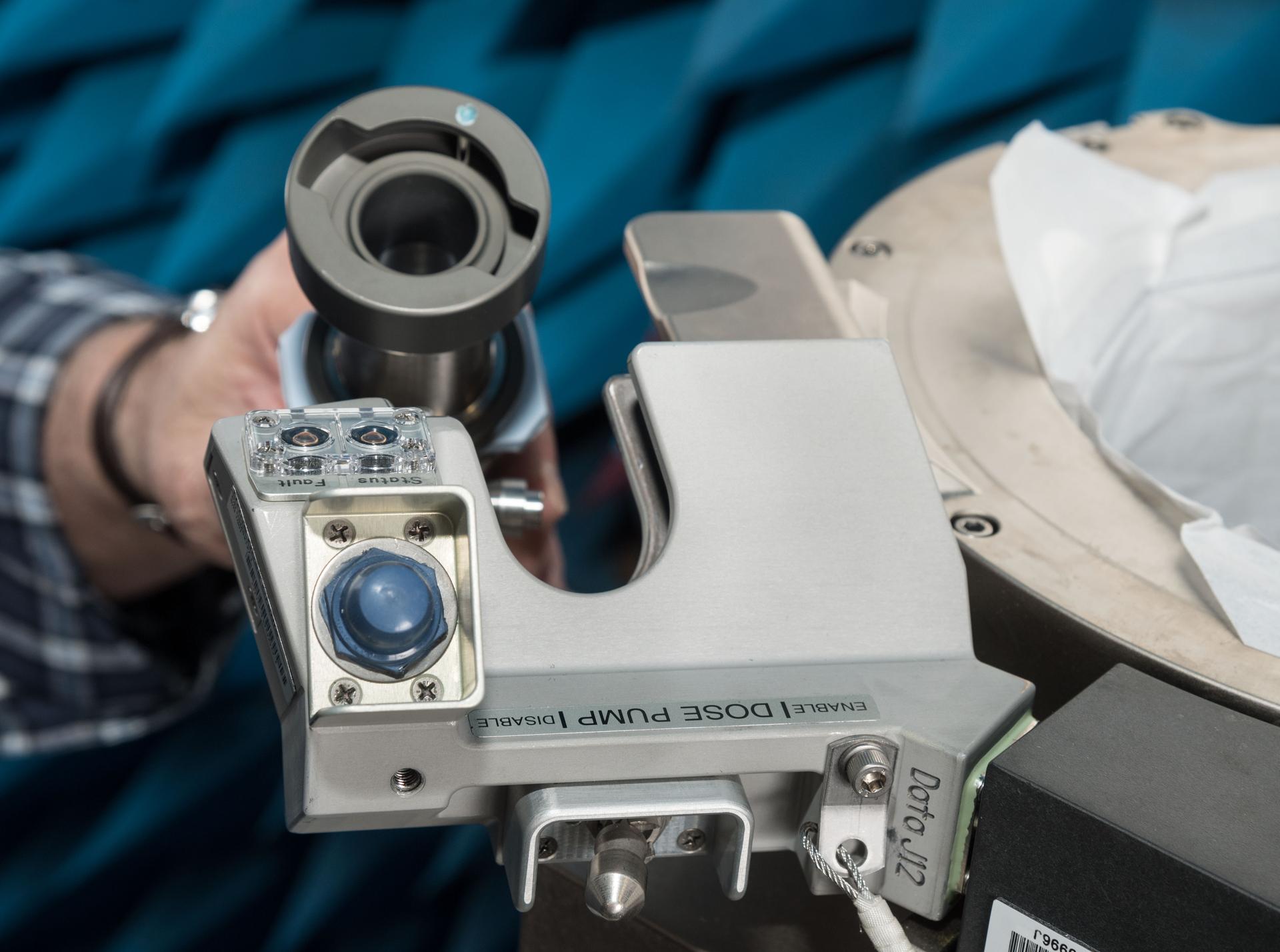
Medical Care
In case of minor medical needs during the mission, Orion will have a medical kit on board that includes everything from basic first aid items to diagnostic tools, such as a stethoscope and an electrocardiogram, that can be used to provide data to physicians on the ground. The crew will also have regular private medical conferences with flight surgeons in mission control to discuss their health and well-being.
Catching Some Shuteye
With a jam-packed schedule, the Artemis II crew will have a full eight hours of sleep built into their schedule to ensure they’re well rested and can make the most of their mission. For most of the mission, all four crew will sleep at the same time, attaching sleeping bags to Orion’s walls for some shuteye.
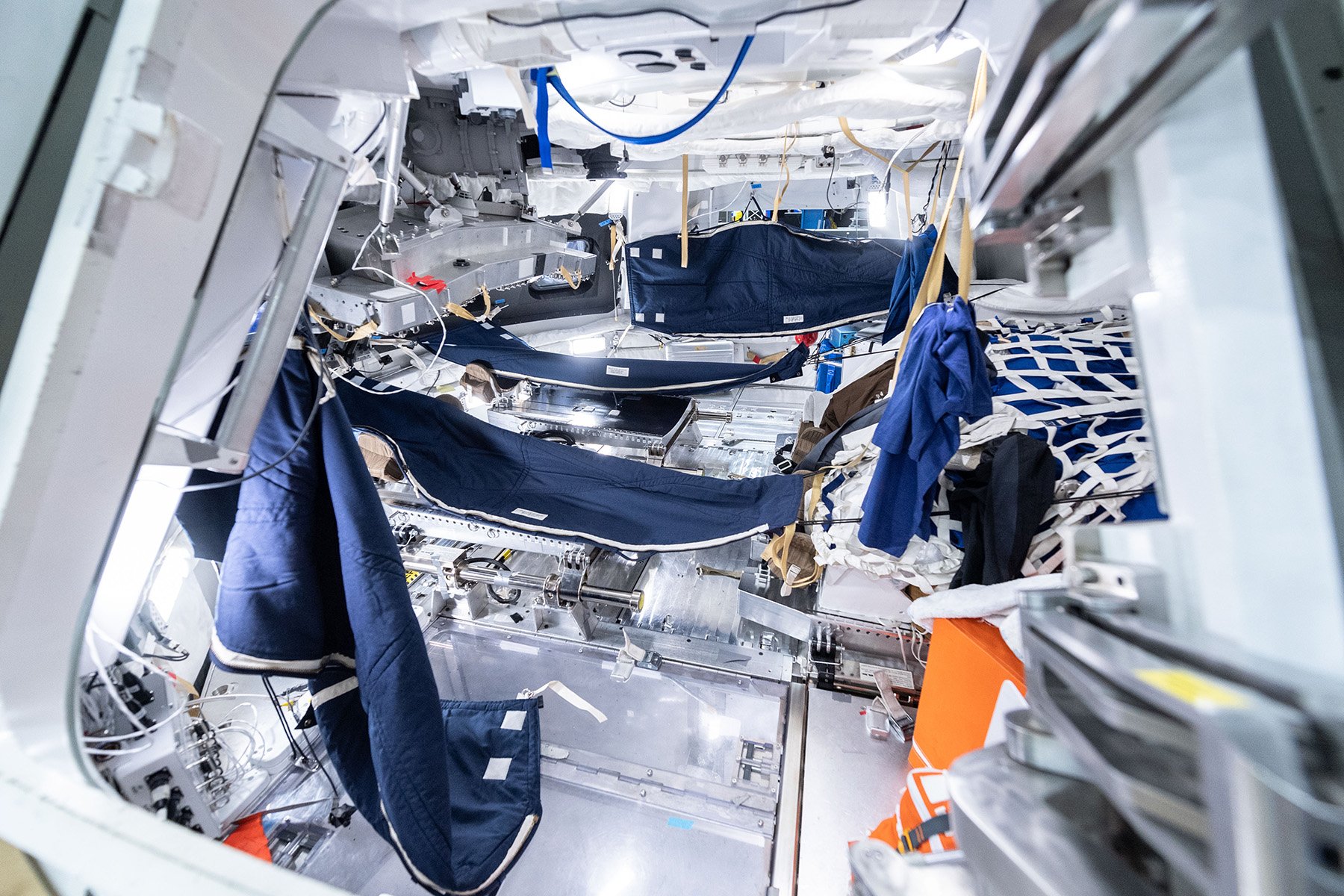
Keeping in Touch
Inside Orion, the astronauts will use a handheld microphone and speaker or wear a headset to communicate with mission controllers, conduct medical checks with flight physicians, and catch up with their families. The crew will also have tablets and laptops they can use to review procedures and load entertainment onto before launch.
Artemis II will confirm all Orion’s systems operate as designed with crew aboard in the actual environment of deep space. The mission will pave the way for future lunar surface missions, including by the first woman and first person of color, establishing long-term lunar science and exploration capabilities, and inspire the next generation of explorers – The Artemis Generation.
Okay, Psyche is the name of a metal asteroid. It's also the name of a NASA space craft that will study the asteroid. NASA notes:
Psyche’s main computer, flight software, fault-protection systems, and most of the telecommunications systems come from NASA’s Jet Propulsion Laboratory (JPL) in Southern California. A Palo Alto, California, division of Colorado-based Maxar Technologies provided the main body of the spacecraft and most of its engineering hardware systems.
The spacecraft also includes a technology demonstration. Attached to Psyche is the Deep Space Optical Communications (DSOC), a NASA experiment that will test optical, or laser, communications beyond the Moon.
Spacecraft Specs
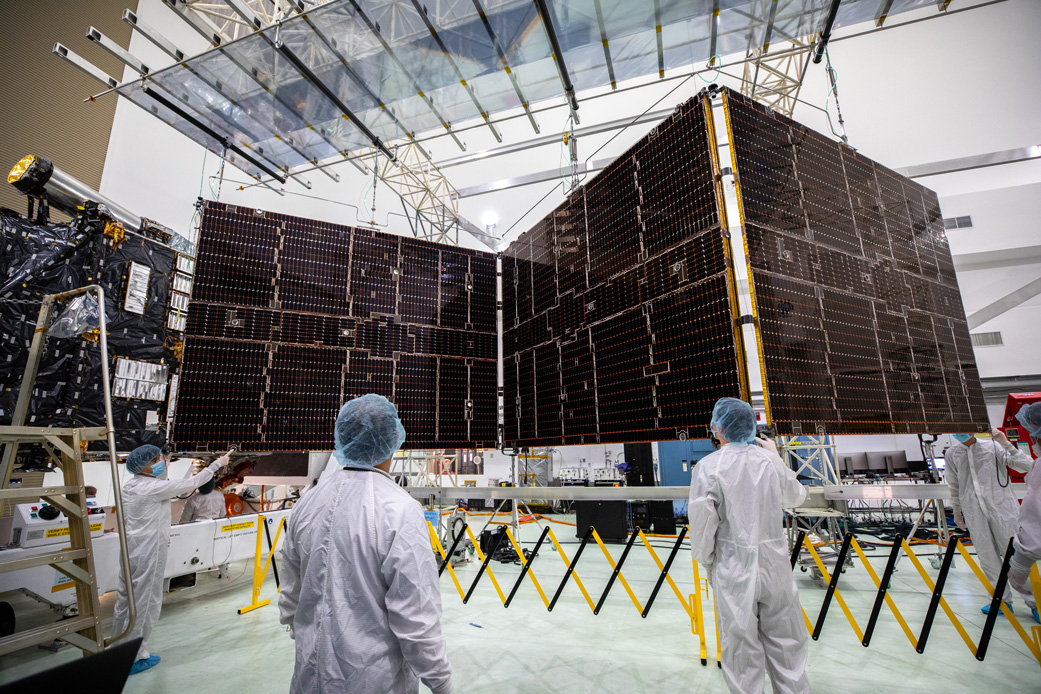
Size
With its solar panels deployed at 81 feet (25 meters) by 24 feet (7.3 meters), Psyche would just about cover a tennis court. The spacecraft body, or bus, is 16.1 feet (4.9 meters) tall, including the 6.6-foot (2-meter) booms for two instruments, 7.1 feet (2.2 meters) wide, and 7.8 feet (2.4 meters) deep.
Mass
At launch, the Psyche spacecraft is expected to have a mass of up to 6,056 pounds (2,747 kilograms), including the Deep Space Optical Communications (DSOC) technology demonstration attached to it. The total mass at launch, including the rocket, is 3.16 million pounds (1.43 million kilograms), more than 99% of which is accounted for by the rocket.
Power
Two five-panel, cross-shaped solar arrays power everything on board, including the science instruments. The solar arrays will produce 21 kilowatts of power when leaving the Earth and between 2.3 and 3.4 kilowatts of power during orbit around the asteroid.
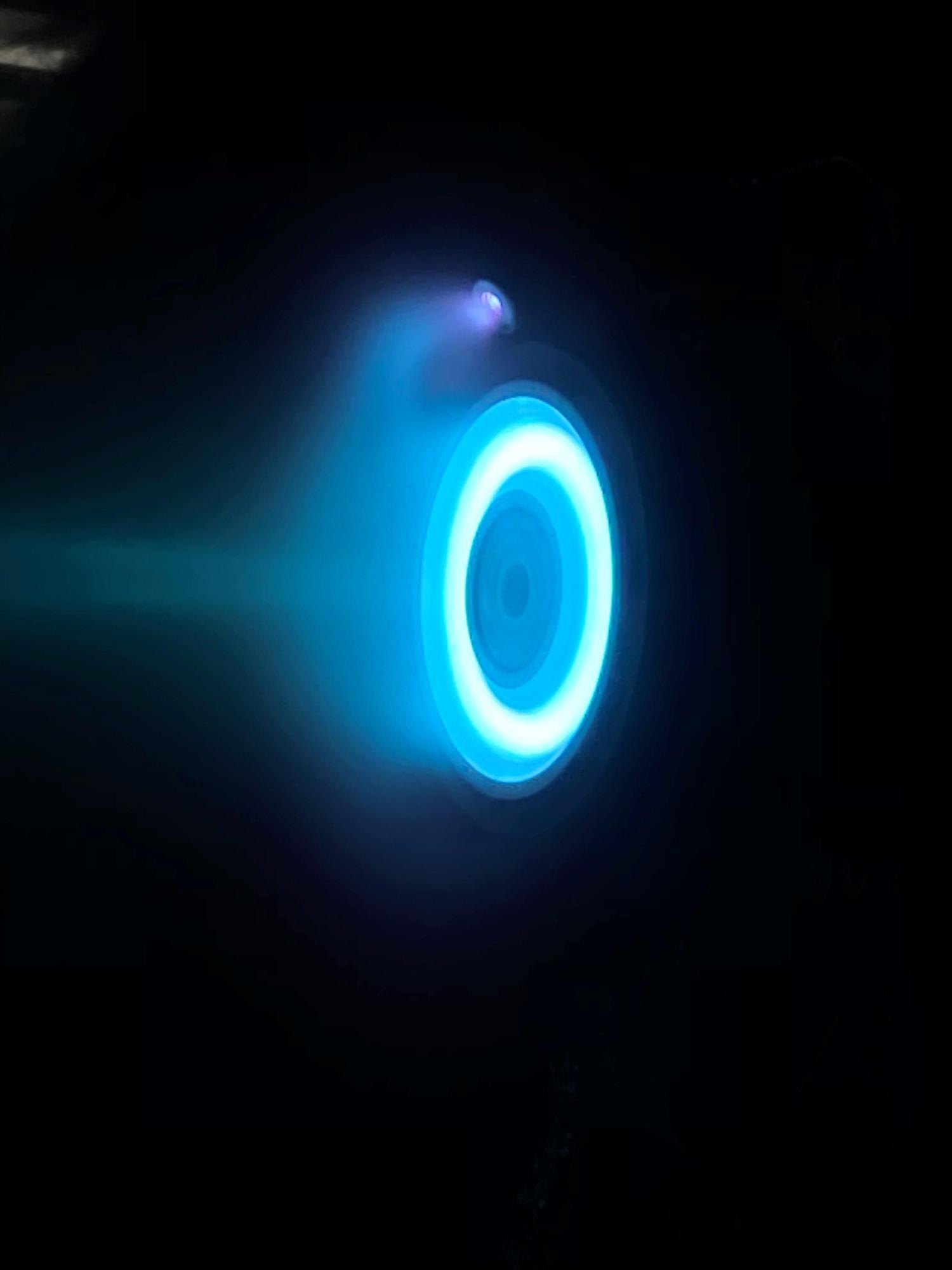
Propulsion
Psyche uses solar electric propulsion. The spacecraft has four Hall-effect thrusters that use electromagnetic fields to expel charged atoms, or ions, of inert xenon gas that in turn create thrust, trailing a blue glow of xenon. Only one thruster is used at a time, providing up to 240 millinewtons of thrust – about the amount of force that you would feel holding the weight of one AA battery. Psyche will carry seven 22-gallon (82-liter) tanks of xenon propellant – up to 2,392 pounds (1,085 kilograms).
Telecommunications
Psyche will communicate with Earth with four antennas: one 6.5-foot (2-meter) fixed high-gain antenna provided by Maxar and three small low-gain antennas designed and manufactured by JPL. Like all NASA interplanetary missions, Psyche will send data and receive commands through the Deep Space Network (DSN), which has three ground stations around Earth to talk with and track spacecraft.
Science Instruments
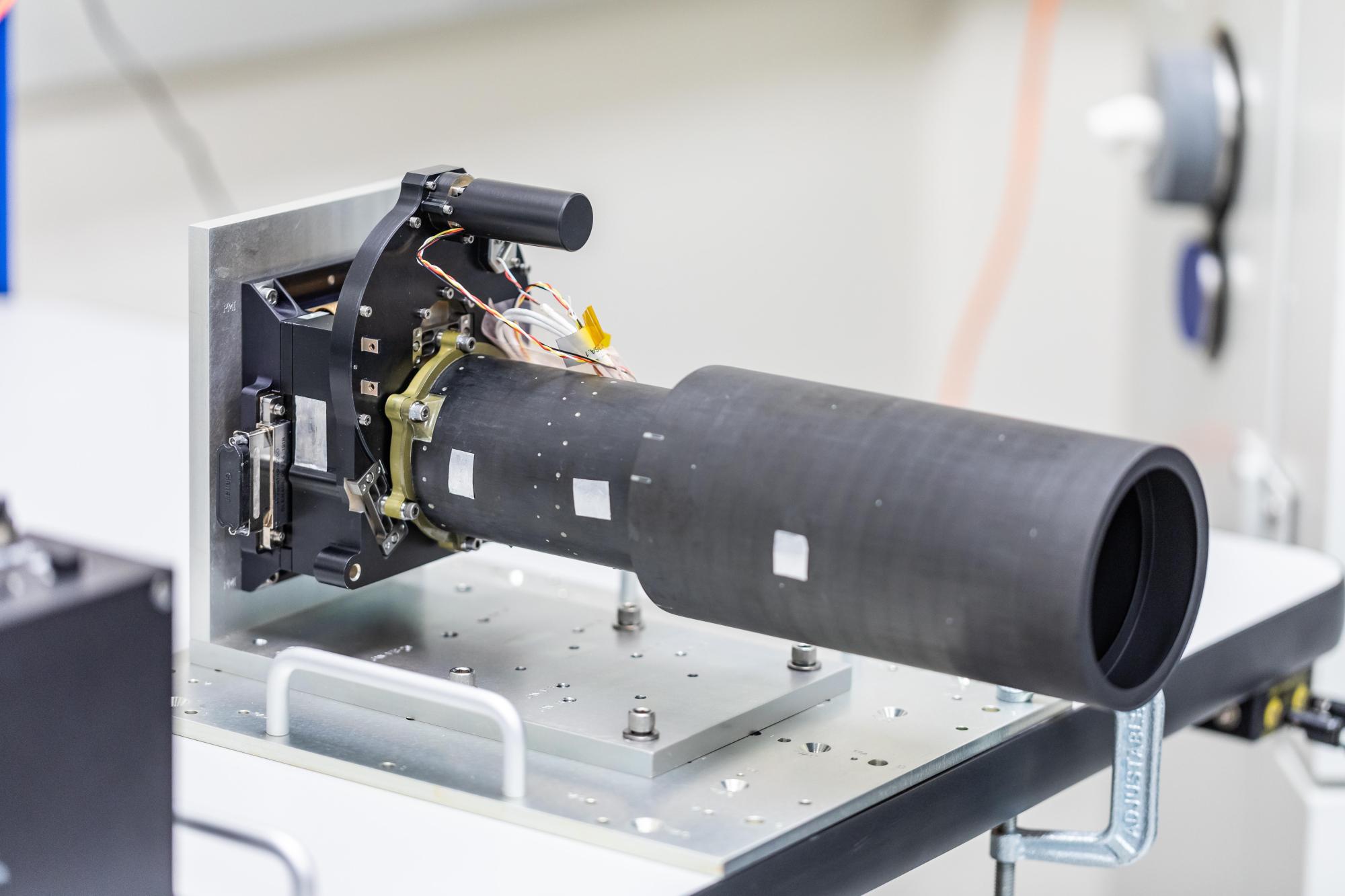
Multispectral Imager
Psyche’s multispectral imager consists of a pair of identical cameras equipped with filters and telescopic lenses to photograph the surface of the asteroid in different wavelengths of light. The cameras can take pictures in the part of the spectrum visible to the human eye, as well as in near-infrared wavelengths of light beyond what humans can see.
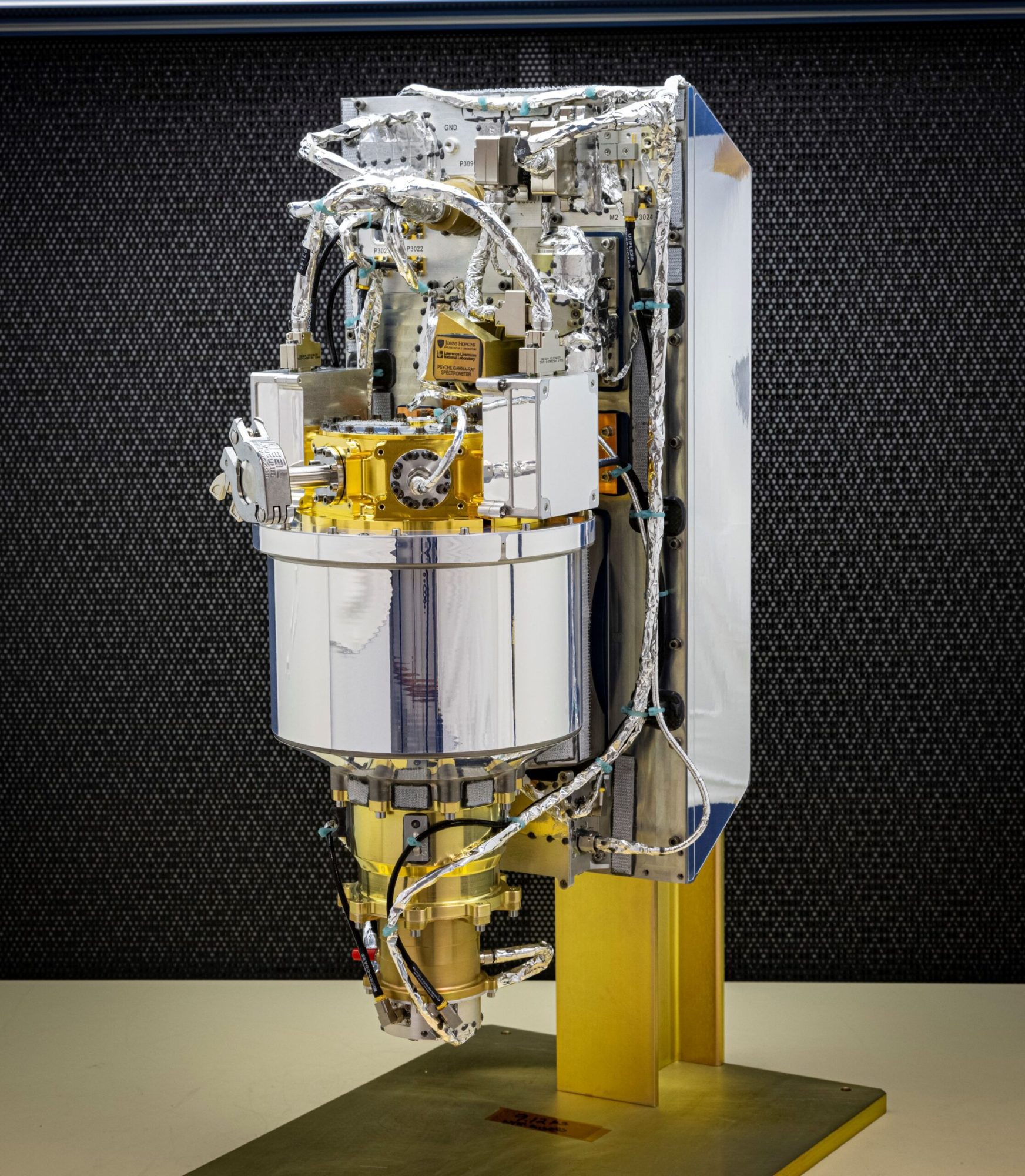
Gamma-Ray and Neutron Spectrometer
The orbiter’s gamma-ray and neutron spectrometer will help scientists determine the chemical elements that make up the asteroid’s surface material. As cosmic rays and high energy particles bombard the asteroid Psyche’s surface, the elements there absorb the energy. In response, they emit neutrons and gamma rays of varying energy levels. The spectrometer can detect these emissions, enabling scientists to match them to properties of known elements to determine what Psyche is made of.
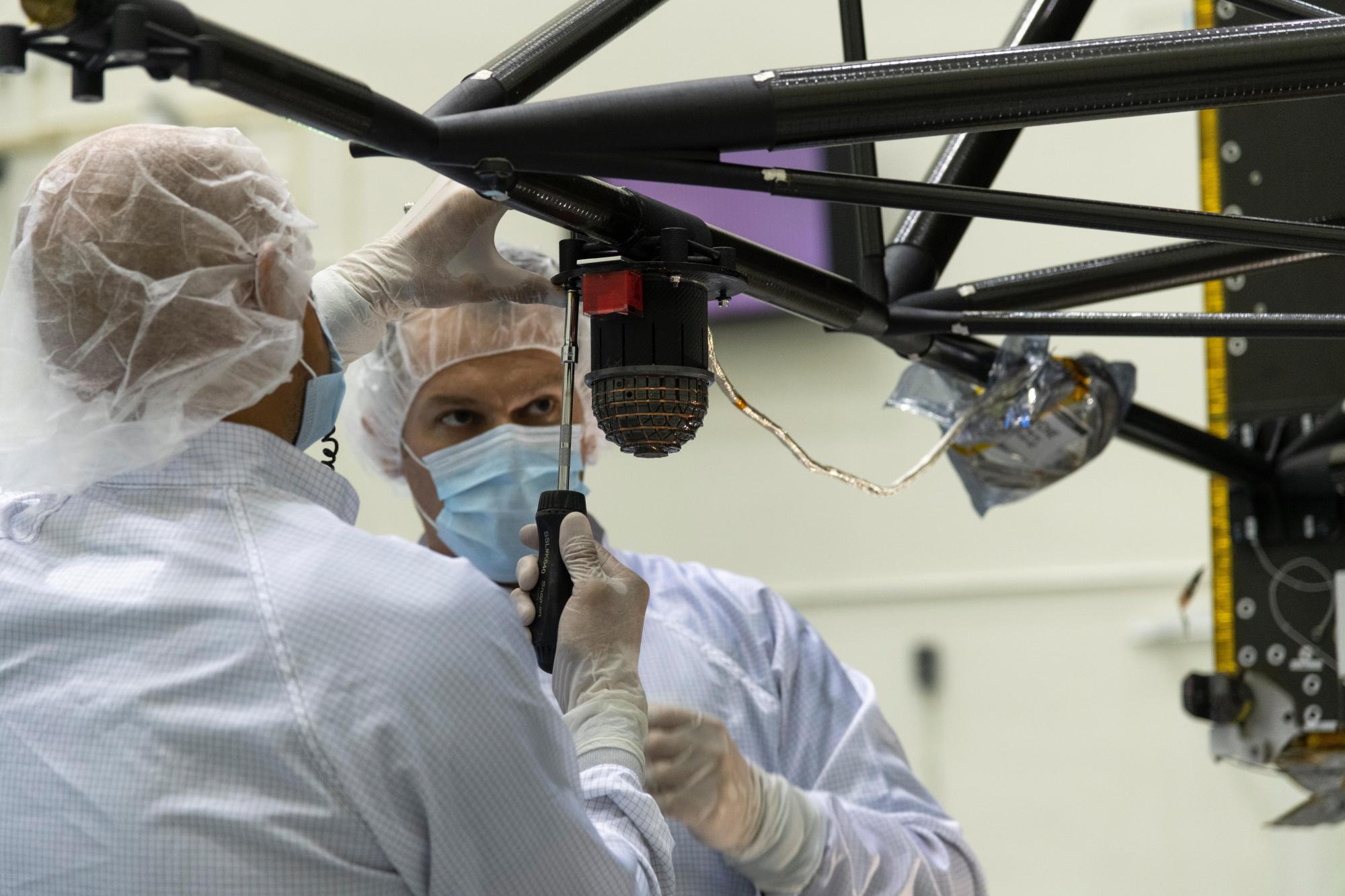
Magnetometer
The orbiter’s magnetometer will look for evidence of an ancient magnetic field at asteroid Psyche. Unlike Earth and other rocky planets that generate a magnetic field in their liquid metallic cores, small bodies like asteroids do not generate one because they are frozen. Confirmation of a remanent magnetic field at Psyche would be strong evidence that the asteroid formed from the core of a planetary body.
Gravity Science
The Psyche science team will rely on the telecommunications system, primarily used to send commands to and receive data from the spacecraft, to conduct gravity science. By analyzing the X-band radio waves the spacecraft communicates with, scientists can measure how asteroid Psyche affects the spacecraft’s orbit. From that information, scientists can determine the asteroid’s rotation, mass, and gravity field, providing additional clues about the composition and structure of Psyche’s interior.
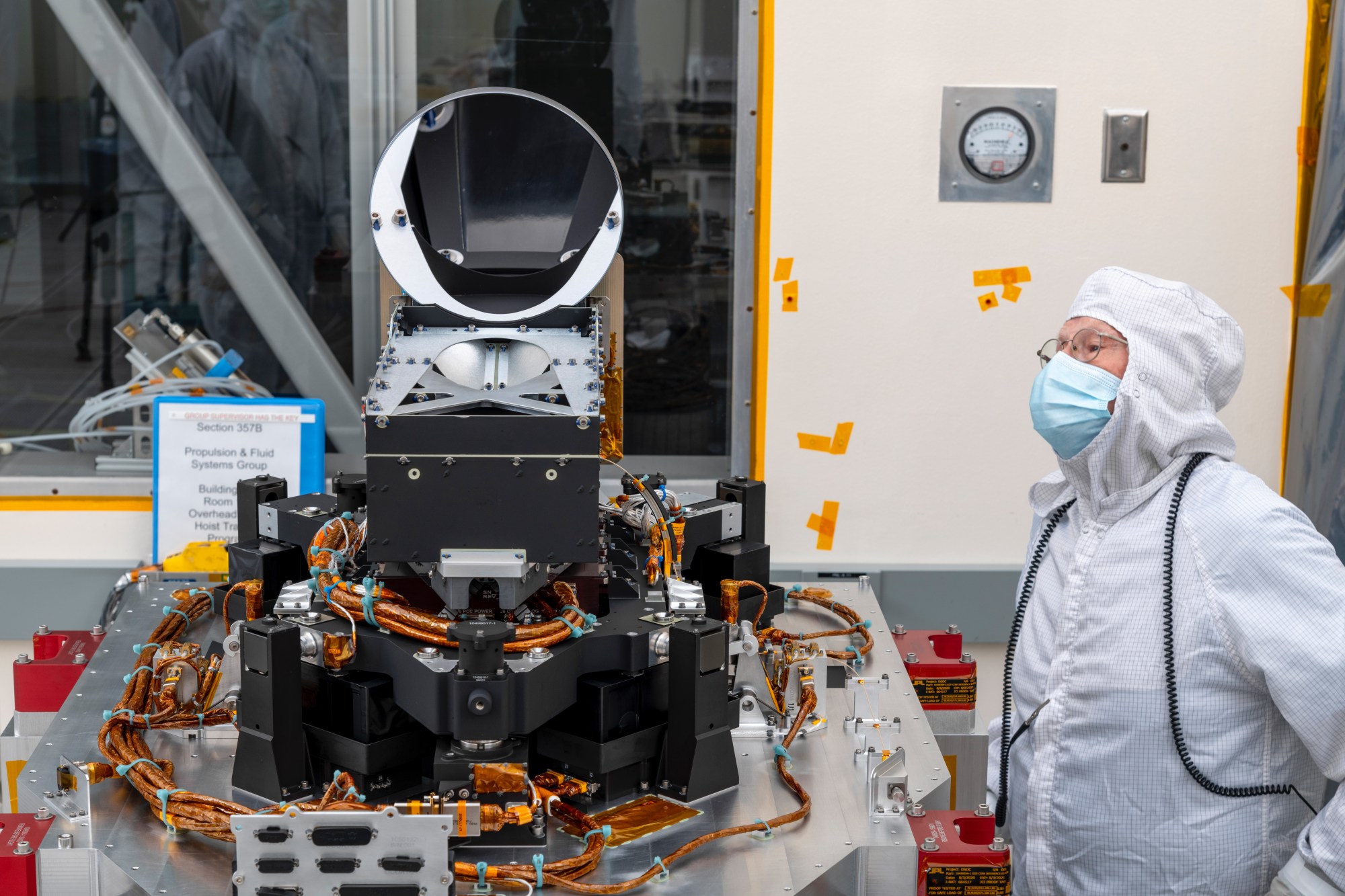
Deep Space Optical Communications (DSOC)
Bolted to a side of the Psyche spacecraft is a pioneering technology demonstration: NASA’s Deep Space Optical Communications experiment, or DSOC. Using a near-infrared laser, DSOC will be the agency’s first test of high-bandwidth optical communications between Earth and distances far exceeding the Moon.
To meet the demands of future space missions relying on current state-of-the-art radio systems, huge increases in hardware size, mass, and power would be required to transmit and receive high-bandwidth data such as high-definition images and video. Optical communications could potentially provide this essential bandwidth enhancement without requiring such hardware increases. Much like upgrading old telecommunications infrastructure on Earth with fiber optics to meet growing data demands, going from radio communications to laser communications would increase current data rates 10 to 100 times.
DSOC is not intended to relay Psyche mission data since the technology demonstration is planned for the first two years of the spacecraft’s cruise. But if it proves successful, the technology will be used by future human and robotic spacecraft to transmit huge volumes of science data, allowing more innovative space mission concepts to take flight. Ultimately, DSOC may pave the way for broadband communications that will help support humanity’s next giant leap: When NASA sends astronauts to Mars.
"Iraq snapshot" (THE COMMON ILLS):
In a statement to CNN published Monday, Kelly delivered a scathing criticism of former President Trump while confirming reporting in The Atlantic in 2020 that detailed the comments he made during his presidency.
The Atlantic reported that Trump privately made damning statements against U.S. service and veterans, such as the late Sen. John McCain, a former Vietnam prisoner of war, and former President George H.W. Bush, a former Navy pilot who was shot down in World War II. During a visit to France in 2018 for the centennial anniversary of the end of World War I, Trump also reportedly called Marines who died at Belleau Wood “suckers” and fallen soldiers at Aisne-Marne American Cemetery “losers.”
Butler has served as president of EMILY’s List, an organization that works to elect pro-choice Democratic women, since 2021.
She previously worked as the director of public policy and campaigns in North America for Airbnb, a strategist and partner at political consulting firm SCRB Strategies, and a senior advisor for Vice President Kamala Harris’s 2020 presidential campaign. She also has a long and involved history with the labor movement, having served as the president of home-care workers union SEIU Local 2015 for more than a decade.
Today, Laphonza Butler was sworn-in to the U.S. Senate seat previously held by Democratic Sen. Dianne Feinstein, who passed away last week at 90. Ms. Butler, who previously served as president of Emily’s List, is also a labor leader, political strategist, and an advocate for women and working people. She is now the sole Black woman serving in Congress as a U.S. senator, the first openly LGBTQ person to represent California in the Senate, the first Black lesbian to openly serve in Congress in American history, and the second Black woman to represent California in the Senate following Vice President Kamala Harris.
LDF President & Director-Counsel Janai Nelson issued the following statement in response:
“We applaud Governor Newsom for his historic appointment of Laphonza Butler to represent California in the U.S. Senate. We also congratulate Senator Butler on this momentous achievement in a career that has been distinguished by leadership, advocacy, and public service. She is one of only three Black women to have served as a senator in the U.S. Congress and the only Black LGBTQ+ woman to do so. These historic distinctions underscore the continued importance of embracing and empowering a diversity of perspectives at key decision-making tables. We are especially encouraged by Senator Butler’s labor credentials and her work on the behalf of women and girls, whose rights to bodily autonomy in the current national landscape continue to require sustained defense. We look forward to the contributions Ms. Butler will make in the U.S. Senate on behalf of the communities she has long served but who have never been fully represented in the halls of Congress.”
###
Founded in 1940, the Legal Defense Fund (LDF) is the nation’s first civil rights law organization. LDF’s Thurgood Marshall Institute is a multi-disciplinary and collaborative hub within LDF that launches targeted campaigns and undertakes innovative research to shape the civil rights narrative. In media attributions, please refer to us as the Legal Defense Fund or LDF. Please note that LDF has been completely separate from the National Association for the Advancement of Colored People (NAACP) since 1957—although LDF was originally founded by the NAACP and shares its commitment to equal rights.
SACRAMENTO – California Legislative Women’s Caucus Chair Senator Nancy Skinner (D-Berkeley) and Vice Chair Assemblymember Cecilia Aguiar-Curry (D-Winters) today applauded Gov. Gavin Newsom’s selection of Laphonza Butler to be California’s new U.S. senator, replacing the late Dianne Feinstein.
“We commend Gov. Newsom for his choice of Laphonza Butler to be California’s new U.S. Senator, filling out the remaining term of the legendary Sen. Feinstein. Dianne Feinstein was a true trailblazer for women in politics, and so it’s fitting that her successor, Laphonza Butler, will also break barriers as the first out woman of color to serve in either house, Senate or Congress. For now, Butler will also be the only Black woman U.S. Senator and the first openly LGBTQ person to represent California in the Senate.
“For the past few years, Butler has been a brilliant leader of Emily’s List, the nation’s largest political action committee promoting women into elected office. She was also the first mother and woman of color to be president of the pro-choice organization.
“As a mom and former labor leader, who headed up California’s largest union, SEIU Local 2015, representing hundreds of thousands of long-term care workers, Butler is a steadfast champion of women and girls and working-class families. She’s an excellent choice to represent California in Washington, D.C., and we’re confident that she will not only fiercely protect the rights of women and girls but also help build a better nation for all.”
###
NAACP President & CEO Derrick Johnson released the following statement congratulating Butler and commending Newsom:
"The NAACP is proud to congratulate Laphonza Butler on her well deserved appointment to serve as the first Black, openly LGBTQ+ Senator. It is only right that a Black woman who has paved the way for countless others to lead is now given an opportunity to lead herself. The NAACP commends Governor Newsom for taking steps to fill the gaps in representation that currently exist within our Senate. We look forward to supporting the future Senator as she makes strides in the halls of Congress. One thing is clear - Black women are supreme."
“There are no conditions related to the Governor’s appointment of Senator-designate Butler. That decision is entirely hers,” the spokesperson said.
Butler is replacing Sen. Dianne Feinstein (D), a trailblazer for women in politics who died last week, leaving Newsom to pick her replacement.
For the first time in U.S. history, the House of Representatives voted to oust its own leader Tuesday after a motion by far-right Republican Rep. Matt Gaetz of Florida to vacate the appointment of Speaker of the House Kevin McCarthy's speakership passed with eight GOP votes and the support of every Democrat present.
The 216-210 vote to remove McCarthy (R-Calif.) came after his allies failed to come up with enough votes to table the motion to vacate.
In addition to Gaetz, the Republicans who voted for the motion to vacate were: Reps. Andy Biggs (Az.), Ken Buck (Col.), Tim Burchett (Tenn.), Eli Crane (Az.), Bob Good (La.), Nancy Mace (S.C.), and Matt Rosendale (Mt.).
Those lawmakers have accused McCarthy of being insufficiently conservative. They were incensed by his deal with the White House to raise the debt limit earlier this year and have demanded the House make even deeper cuts to social safety net programs than the deal contained.
The pro-democracy group Stand Up America said in a statement that "today’s vote to remove Kevin McCarthy as speaker shows how intent ultra-MAGA Republicans are on sowing chaos and dysfunction, rather than actually governing on behalf of the American people."
While the media has presented the crisis as a conflict of personalities, Tuesday’s vote is reflection of deep divisions within the ruling class itself. Gaetz and roughly a dozen other far-right Republicans opposed the CR because it lacked social spending cuts and further appropriations for the border police.
In an interview on Newsmax following the vote, Gaetz, speaking for a faction of finance capital, rejected accusations that without a speaker the government would be thrown into “chaos” and reiterated that McCarthy was stripped of the speaker’s gavel because of his refusal to enact sufficiently draconian spending cuts.
“Chaos is the dollar losing its status as the global reserve currency. Chaos is the greatest nation in the world sitting on top of $33 trillion debt. Chaos is accepting Biden budgets that will lead to $2 trillion annual deficits...forever,” said Gaetz.
Following his
ouster, McCarthy told a closed-door meeting of House Republicans that he
would not seek reelection as speaker. At a subsequent Tuesday evening
news conference he said, “I will not run for speaker again... I’ll have
the conference pick somebody else.”
Republican Patrick McHenry of
North Carolina is currently serving as the interim speaker. McHenry
said the House would not meet again until next Tuesday, with the aim of
holding a vote for the new speaker on Wednesday, October 11. Several
names have been floated by Republican representatives as possible
candidates to replace McCarthy, including Majority Leader Steve Scalise
(Louisiana), Majority Whip Tom Emmer (Minnesota), Kevin Hearn (Oklahoma)
and even Donald Trump.
While it is unclear who, if anyone, will be the speaker in the immediate future, what is clear is that Tuesday’s vote marks an inflection point in the ongoing US political crisis, which has not subsided more than two-and-a-half years after Trump’s failed coup. The ousting of McCarthy sets the stage for even more explosive political convulsions and a further shift to the right by the entire political establishment.
President Biden has recorded his first positive poll rating in five months in a new Rasmussen Reports survey, which found 49 percent of Americans approve of his conduct in office while 48 percent disapprove.
Iraq National Day
On behalf of the Government and the people of the United States of America, I extend to Prime Minister Sudani and the Iraqi people our sincere congratulations as you celebrate your independence.
The 360-degree strategic partnership that exists between our two countries continues to advance our shared values as we work together to address global challenges like tackling climate change, promoting economic development, advancing human rights, protecting the environment, and ensuring the enduring defeat of ISIS. We continue to strengthen people-to-people ties that form the basis of our partnership.
This is a day to reflect on and be proud of Iraq’s achievements and the perseverance of its people. For over 91 years, Iraq has endeavored through adversity to foster a more inclusive and equitable society for its citizens and for future generations of Iraqis.